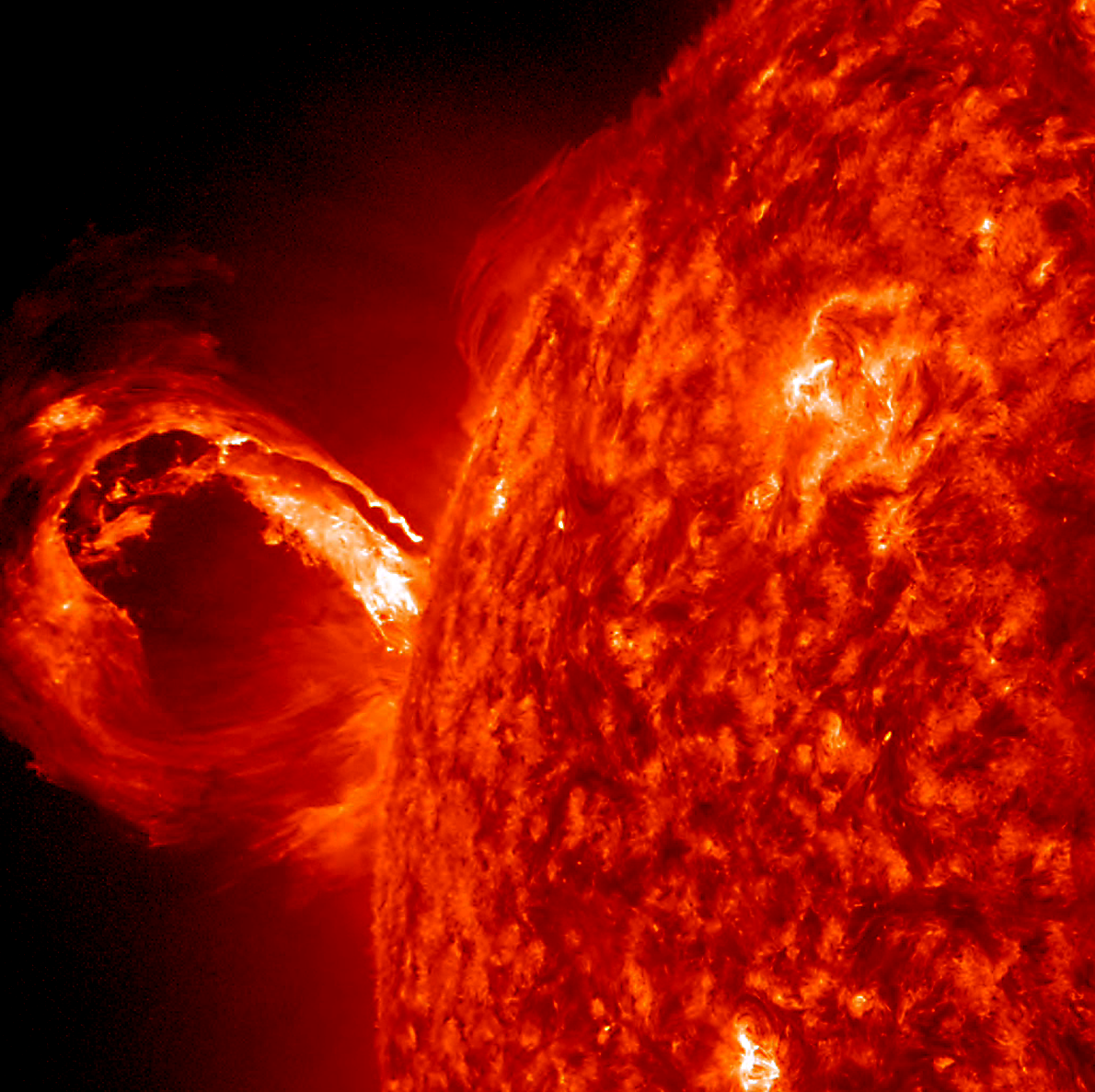April 5, 2019 - Scientists charged with predicting
the Sun’s activity for the next 11-year solar cycle say that it’s likely
to be weak, much like the current one. The current solar cycle, Cycle
24, is declining and predicted to reach solar minimum - the period when
the Sun is least active - late in 2019 or 2020.
Solar Cycle 25 Prediction Panel experts said Solar Cycle 25 may have a
slow start, but is anticipated to peak with solar maximum occurring
between 2023 and 2026, and a sunspot range of 95 to 130. This is well
below the average number of sunspots, which typically ranges from 140 to
220 sunspots per solar cycle. The panel has high confidence that the
coming cycle should break the trend of weakening solar activity seen
over the past four cycles.
“We expect Solar Cycle 25 will be very similar to Cycle 24: another
fairly weak cycle, preceded by a long, deep minimum,” said panel
co-chair Lisa Upton, Ph.D., solar physicist with Space Systems Research
Corp. “The expectation that Cycle 25 will be comparable in size to Cycle
24 means that the steady decline in solar cycle amplitude, seen from
cycles 21-24, has come to an end and that there is no indication that we
are currently approaching a Maunder-type minimum in solar activity.”
The solar cycle prediction gives a rough idea of the frequency of space weather storms of all types, from radio blackouts to geomagnetic storms and solar radiation storms.
It is used by many industries to gauge the potential impact of space
weather in the coming years. Space weather can affect power grids,
critical military, airline, and shipping communications, satellites and
Global Positioning System (GPS) signals, and can even threaten
astronauts by exposure to harmful radiation doses.
Solar Cycle 24 reached its maximum - the period when the Sun is most
active - in April 2014 with a peak average of 82 sunspots. The Sun’s
Northern Hemisphere led the sunspot cycle, peaking over two years ahead
of the Southern Hemisphere sunspot peak.
 |
| Powerful eruption from the surface of the sun captured on May 1, 2013. NASA |
Solar cycle forecasting is a new science
While daily weather forecasts are the most widely used type of
scientific information in the U.S., solar forecasting is relatively new.
Given that the Sun takes 11 years to complete one solar cycle, this is
only the fourth time a solar cycle prediction has been issued by U.S.
scientists. The first panel convened in 1989 for Cycle 22.
For Solar Cycle 25, the panel hopes for the first time to predict the
presence, amplitude, and timing of any differences between the northern
and southern hemispheres on the Sun, known as Hemispheric Asymmetry.
Later this year, the Panel will release an official Sunspot Number curve
which shows the predicted number of sunspots during any given year and
any expected asymmetry. The panel will also look into the possibility of
providing a Solar Flare Probability Forecast.
“While we are not predicting a particularly active Solar Cycle 25,
violent eruptions from the sun can occur at any time,” said Doug
Biesecker, Ph.D., panel co-chair and a solar physicist at NOAA’s Space
Weather Prediction Center.
An example of this occurred on July 23, 2012 when a powerful coronal mass ejection (CME) eruption missed the Earth but enveloped NASA’s STEREO-A satellite. A 2013 study
estimated that the U.S. would have suffered between $600 billion and
$2.6 trillion in damages, particularly to electrical infrastructure,
such as power grid, if this CME had been directed toward Earth. The
strength of the 2012 eruption was comparable to the famous 1859
Carrington event that caused widespread damage to telegraph stations
around the world and produced aurora displays as far south as the
Caribbean.
 |
| Forecaster monitors space weather at NOAA’s Space Weather Prediction Center |
The Solar Cycle Prediction Panel forecasts the number of sunspots
expected for solar maximum, along with the timing of the peak and
minimum solar activity levels for the cycle. It is comprised of
scientists representing NOAA, NASA, the International Space Environment
Services, and other U.S. and international scientists. The outlook was
presented on April 5 at the 2019 NOAA Space Weather Workshop in Boulder, Colo.
For the latest space weather forecast, visit https://www.swpc.noaa.gov/

No comments:
Post a Comment